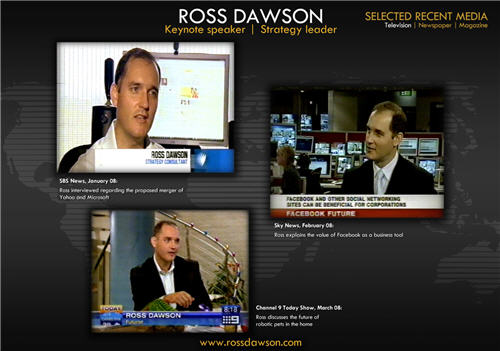Quick review of social media coverage of Future of Media Summit
I’ll do some more detailed reflections on the Future of Media Summit tomorrow. I’m just about to fall over after a very long day, but thought I’d post a few important social media references and commentary on the event.
First stopping point has to be the Future of Media Summit Blog, where participants have been busily posting all day, notably:
Participant roundtables in Sydney:
Future of Media and Television
Flow Economy/ Media Strategy Workshop in Silicon Valley:
Reviews of panel discussions:
Future of TV and video – by Mark Pesce 1
Future of TV and video – by Mark Pesce 2
Future of Privacy and Targeted Advertising
Unconference sessions:
Twitter comments:
See the Summize search for Twitters with the #fom08 tag – literally hundreds of Twitters from attendees at the Future of Media Summit (which included a Twitter 101 session during the Unconference session in Sydney).
Live video:
The Ustream video from Phil Morle
All this will give you a good feel for the event from the perspective of participants. I’ll provide some of my thoughts soon.
In previous years the Summit blog has continued to be active for quite a while after the event as discussions continue online – hopefully this will be the case this year too! Subscribe to the blog to keep up with the conversation.


